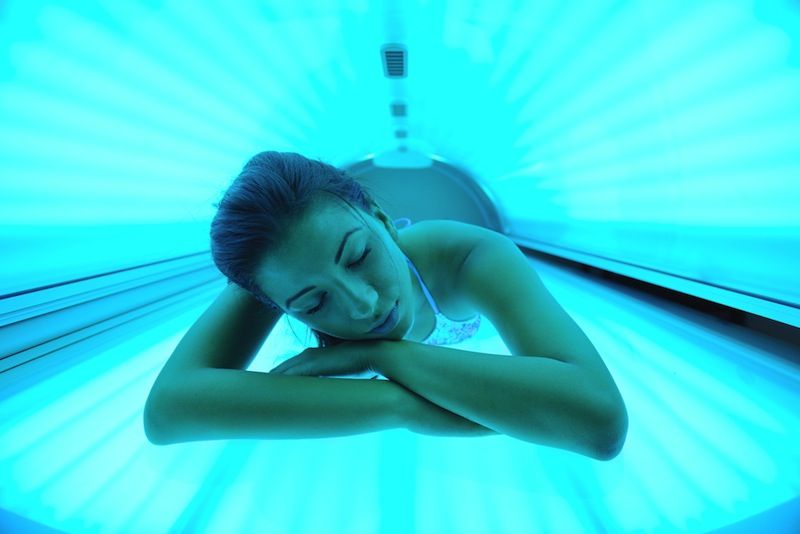Indoor Tanning Linked with Skin Cancer Before Age 50

People who use tanning beds and other indoor tanning devices may be at increased risk of developing certain types of skin cancer early in life, a new study suggests.
In the study, people who said they'd used indoor tanning devices were 60 percent more likely to develop basal cell carcinoma — a slow-growing type of skin cancer — at or before age 50, compared with those who had never used indoor tanning devices.
The link was particularly strong among people who used indoor tanning devices at a young age: Those who used indoor tanning devices before age 20 were twice as likely as those who had never used the devices to develop basal cell carcinoma (BCC) by age 50. [10 Do's and Don'ts to Reduce Your Risk of Cancer]
The findings agree with previous studies that have linked indoor tanning with skin cancer, including an increased risk of melanoma, the deadliest type of skin cancer.
The new results "underscore the importance of counseling adolescents and young adults about the risks of indoor tanning, and for discouraging parents from consenting minors to this practice," the researchers, from the Geisel School of Medicine at Dartmouth College, wrote in the July issue of the journal Pediatrics.
Basal cell carcinoma is the most common type of skin cancer, and usually does not spread to other parts of the body, according to the National Institutes of Health. However, the cancers can come back, and can be difficult to treat, the researchers said. About 2.8 million cases of BCC are diagnosed yearly in the United States, according to the Skin Cancer Foundation.
Some U.S. states have laws banning minors from using tanning beds, and some states require consent from parents. However, 14 states do not have tanning restrictions for minors, the researchers said.
Sign up for the Live Science daily newsletter now
Get the world’s most fascinating discoveries delivered straight to your inbox.
Exposure to ultraviolet (UV) radiation, either from the sun or tanning devices, increases the risk of skin cancer. And indoor tanning devices may produce up to 15 times as much UV radiation as the midday sun, and lead to redness of the skin similar to a sunburn, the researchers said.
The study involved 657 people with BCC, ranging in age from 25 to 50, in New Hampshire, as well as 452 people in about the same age group who didn't have BCC.
Participants with BCC were more likely to report having experienced a large number of painful sunburns: About 41 percent of those with BCC said they'd had 20 or more painful sunburns in their life, compared with about 29 percent of those without BBC.
Time spent outdoors in the summertime as a child did not differ between the two groups, according to the study.
However, about 46 percent of those with BCC said they had used a sunlamp, tanning bed or tanning booth at some point in their lives, compared with about 36 percent of those without BBC.
The link between indoor tanning and skin cancer held even after the researchers considered other factors that could affect skin cancer risk, such as a person's tendency to get sunburned. Still, it's possible that other factors not accounted for by the study could affect the results, the researchers said.
Follow Rachael Rettner @RachaelRettner. Follow Live Science @livescience, Facebook & Google+. Original article on Live Science.

Rachael is a Live Science contributor, and was a former channel editor and senior writer for Live Science between 2010 and 2022. She has a master's degree in journalism from New York University's Science, Health and Environmental Reporting Program. She also holds a B.S. in molecular biology and an M.S. in biology from the University of California, San Diego. Her work has appeared in Scienceline, The Washington Post and Scientific American.









